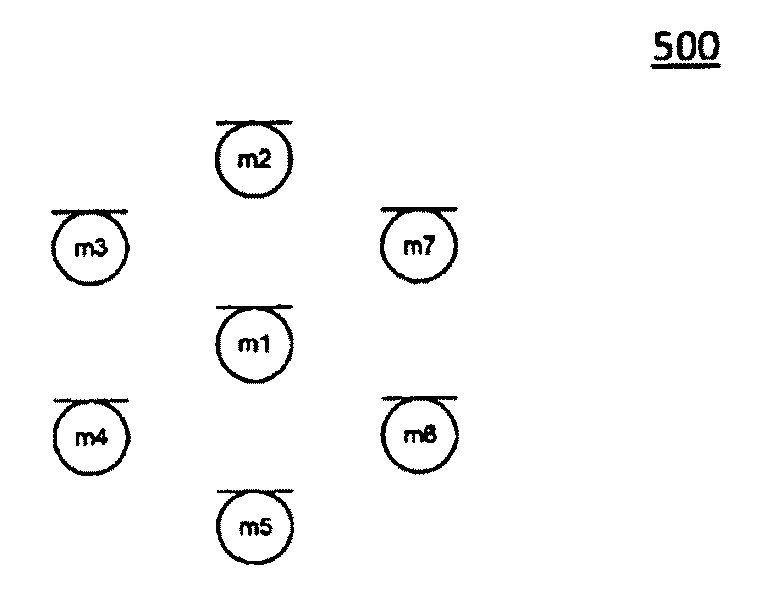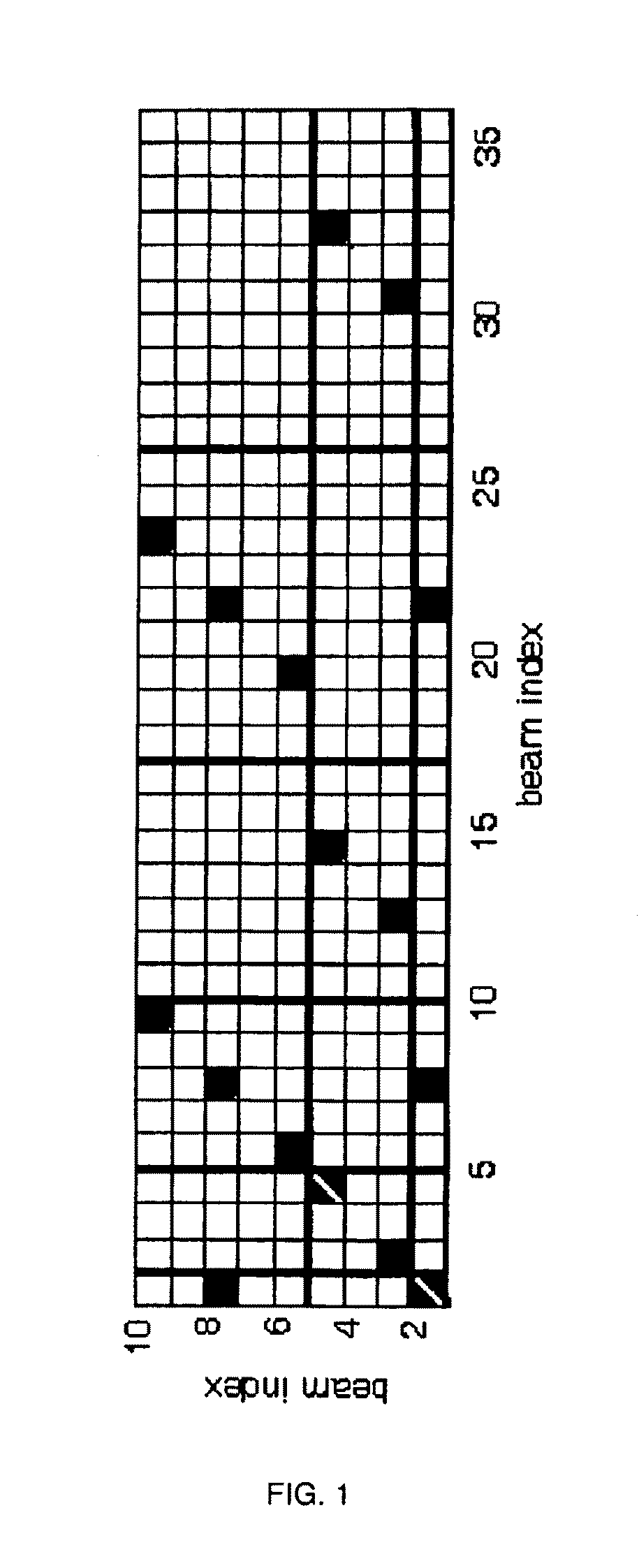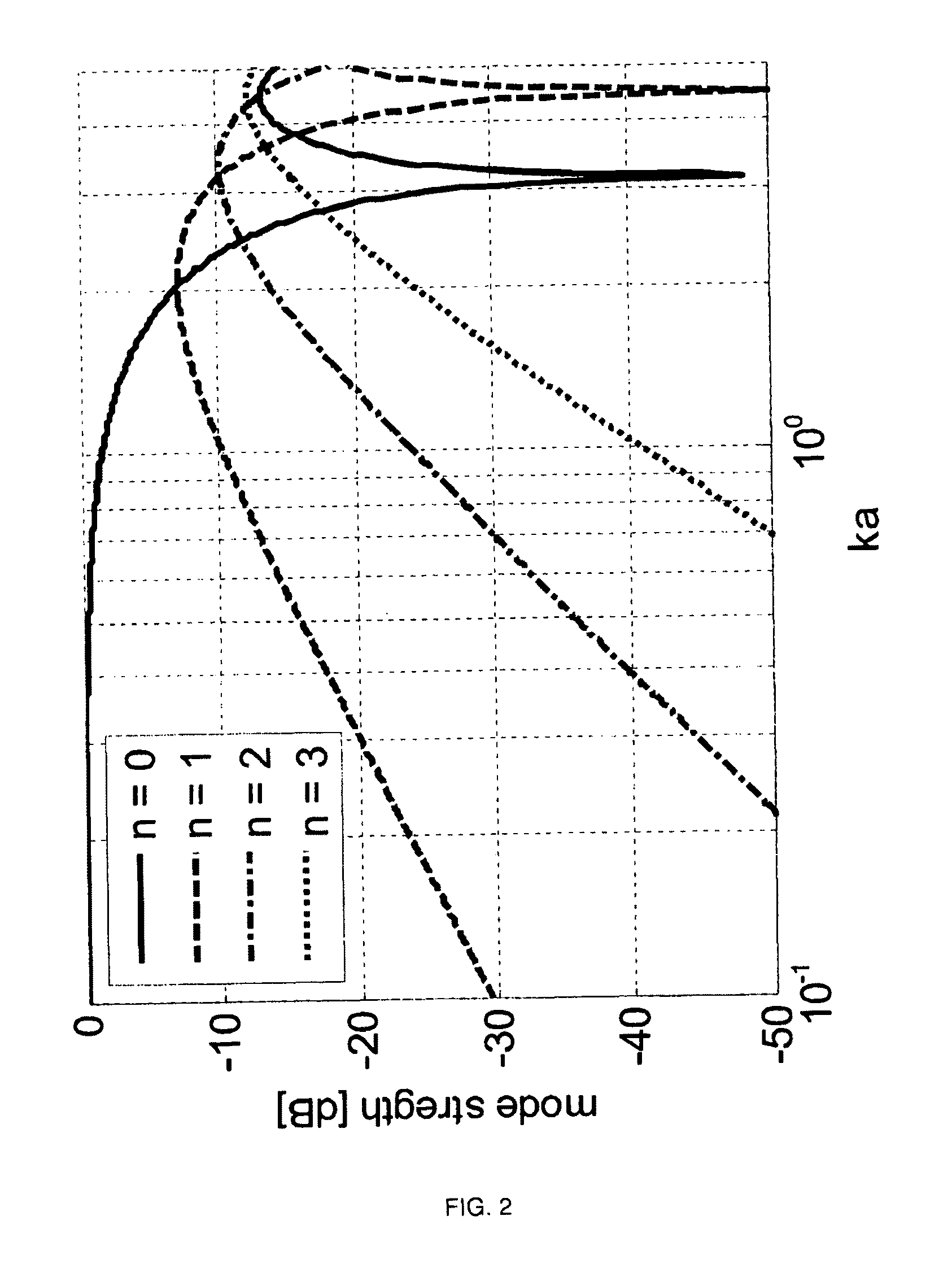Augmented elliptical microphone array
a microphone array and elliptical technology, applied in the field of audio signal processing, can solve the problems of not being able to control the vertical beampattern response in the vertical plane, and the vertical beampattern response can actually exceed the in-plane response of the circular array, so as to achieve the control of the vertical beampattern response, avoid the undesired effect, and increase the sensitivity in the vertical direction
- Summary
- Abstract
- Description
- Claims
- Application Information
AI Technical Summary
Benefits of technology
Problems solved by technology
Method used
Image
Examples
Embodiment Construction
[0021]Harmonic Decomposition Beamforming for Circular Arrays
[0022]Beamforming based on a spatial harmonic decomposition of the sound-field has many appealing characteristics, some of which are steering with relatively simple computations, beampattern design based on an orthonormal series expansion, and the independent control of steering and beamforming. See, e.g., J. Meyer and G. W. Elko, “Spherical Microphone Arrays for 3D sound recording,” Chapter 3 (pp. 67-90) in Audio Signal Processing for Next Generation Multimedia Communication Systems, Editors: Yiteng (Arden) Huang and Jacob Benesty, Kluwer Academic Publishers, Boston, (2004) (referred to herein as “Meyer and Elko”), and H. Teutsch and W. Kellermann, “Acoustic source detection and localization based on wavefield decomposition using circular microphone arrays,” J. Acoust. Soc. Am. 120 (2006), 2724-2736 (referred to herein as “Teutsch and Kellermann”), the teachings of both of which are incorporated herein by reference in thei...
PUM
 Login to View More
Login to View More Abstract
Description
Claims
Application Information
 Login to View More
Login to View More - R&D
- Intellectual Property
- Life Sciences
- Materials
- Tech Scout
- Unparalleled Data Quality
- Higher Quality Content
- 60% Fewer Hallucinations
Browse by: Latest US Patents, China's latest patents, Technical Efficacy Thesaurus, Application Domain, Technology Topic, Popular Technical Reports.
© 2025 PatSnap. All rights reserved.Legal|Privacy policy|Modern Slavery Act Transparency Statement|Sitemap|About US| Contact US: help@patsnap.com



